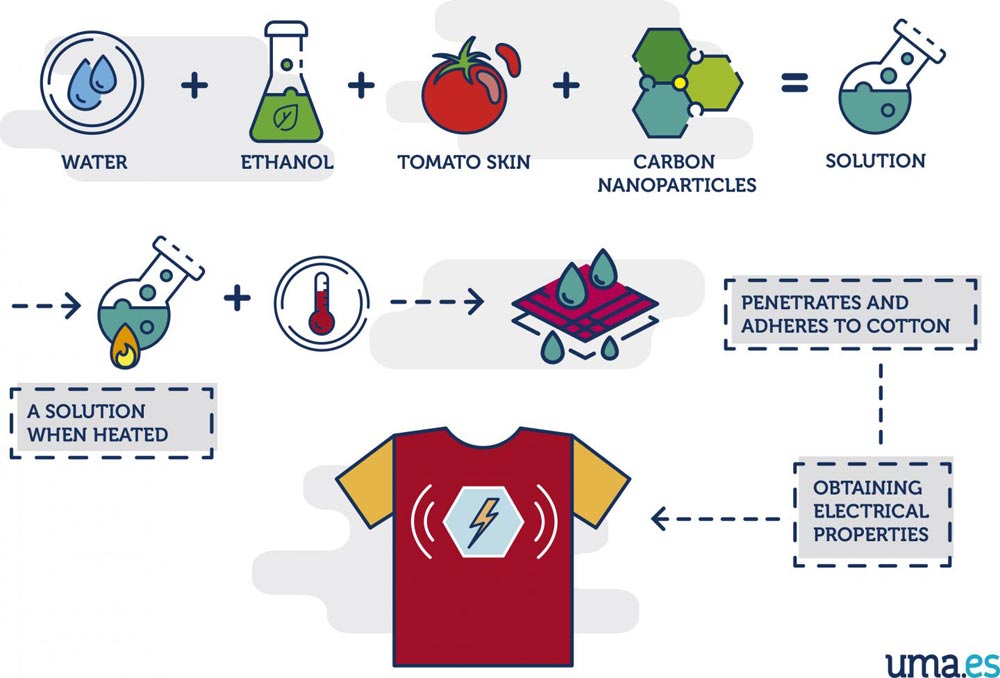

Researchers of the Faculty of Science of the University of Malaga (UMA) have designed a low-cost T-shirt that generates electricity from the temperature difference between the human body and the surroundings.
Credit: University of Malaga
Researchers of the Faculty of Science of the University of Malaga (UMA) have designed a low-cost T-shirt that generates electricity from the temperature difference between the human body and the surroundings.
We are talking about the “e-textile” prototype, developed in collaboration with the Italian Institute of Technology in Genoa (IIT) based on sustainable methods and low-cost materials like tomato skin.
“So far, metals have been the chemical elements commonly used in the fabrication of electronic devices. This project took a step forward, and we have been able to generate electricity by using light and more affordable and less toxic materials”, explains José Alejandro Heredia, one of the authors of this project.
The formula is very simple: water and ethanol -a type of ecological alcohol- derived from tomato skin and carbon nanoparticles. A solution that, according to experts, when heated, penetrates and adheres to cotton, thus obtaining electrical properties, like those generated by tellurium, germanium or lead, but from biodegradable materials.
“When someone walks or runs, warms up. If such person wore a T-shirt designed with these characteristics, the difference between his/her body and the colder temperature of the surroundings could generate electricity”, says Susana Guzmán, another author from the UMA.
“Iron Man” made in UMA
The results of this project, in which the Italian researcher Pietro Cataldi has participated, were published in the journal Advanced Functional Materials. At present, this group of scientists continues their work on the development of devices that can be incorporated into textile to be able to, for example, generate light to make this T-shirt reflective or even charge a mobile phone without a charger.
Other possible applications include biomedicine, thanks to the monitoring of signals of each user, or robotics, because the use of these lighter and more flexible materials enables improvement of robot features.
“In a previous study, we were able to create a Wi-Fi antenna from tomato skin and graphene. We are also studying the possibility of incorporating this invention into the “e-textile” T-shirt, which would enable us to be like the superhero Iron Man, who wears a suit with all types of technological devices, and even fly”, jokes Guzmán.
José Alejandro Heredia and Susana Guzmán are members of the Department of Molecular Biology and Biochemistry of the University of Málaga. They are part of the Institute for Mediterranean and Subtropical Horticulture (IHSM) and their main R+D+i lines include the fabrication of electronic devices with biodegradable materials.
José Alejandro Heredia and Susana Guzmán are members of the Department of Molecular Biology and Biochemistry of the University of Málaga. They are part of the Institute for Mediterranean and Subtropical Horticulture (IHSM) and their main R+D+i lines include the fabrication of electronic devices with biodegradable materials.
Bibliographic reference: Adv. Funct. Mater. 2019, 1907301












